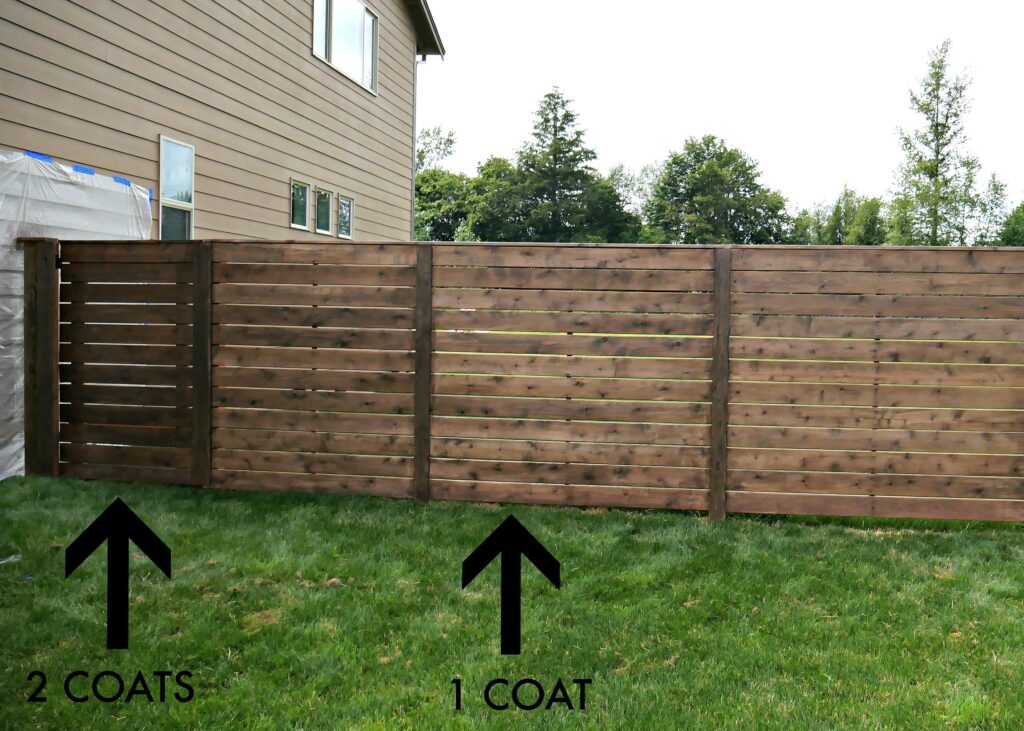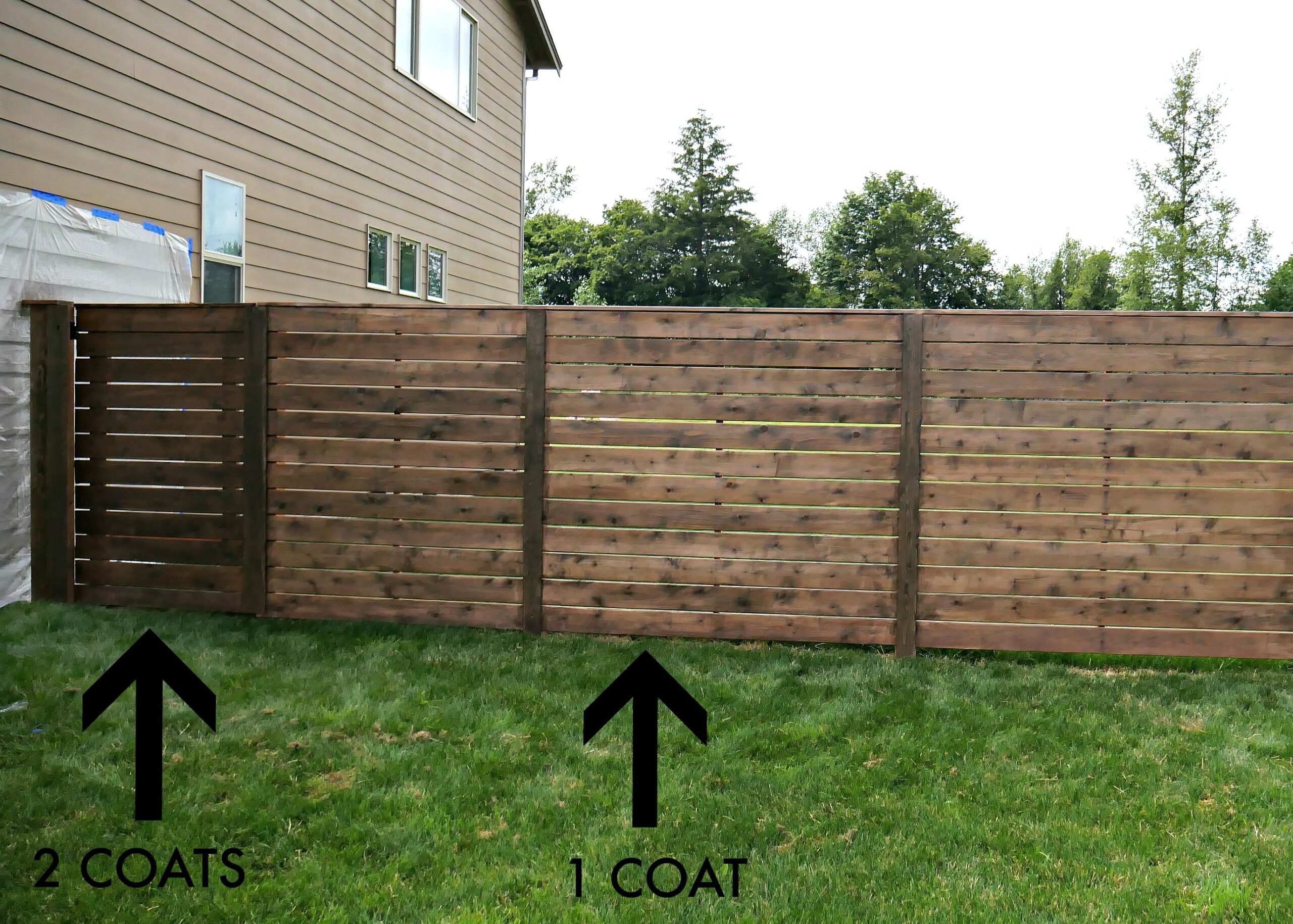
The Ultimate Guide to Choosing the Best Cedar Fence Stains
A cedar fence is a beautiful and durable addition to any property, offering privacy, security, and curb appeal. However, to maintain its natural beauty and longevity, a cedar fence requires proper care, and that starts with choosing the right stain. Selecting the best cedar fence stains isn’t just about aesthetics; it’s about protecting the wood from the elements, preventing rot and decay, and extending the life of your investment. This comprehensive guide will walk you through everything you need to know about cedar fence stains, from understanding the different types of stains available to preparing your fence for staining and applying the stain for optimal results.
Understanding Cedar and Its Staining Needs
Cedar is a naturally durable wood, prized for its resistance to rot, decay, and insect infestation. This is due to the presence of natural oils within the wood. However, even cedar isn’t impervious to the elements. Exposure to sunlight, rain, and temperature fluctuations can cause the wood to fade, crack, and warp over time. Staining a cedar fence helps to protect it from these damaging effects, preserving its beauty and structural integrity. The best cedar fence stains will enhance the natural grain of the wood while providing a protective barrier against moisture and UV rays.
Why Staining is Essential
- Protection from UV Rays: Sunlight can cause cedar to fade and turn gray. Cedar fence stains with UV inhibitors help to block harmful rays and maintain the wood’s natural color.
- Moisture Resistance: Rain and humidity can lead to rot and decay. Stains create a water-repellent barrier, preventing moisture from penetrating the wood.
- Prevention of Cracking and Warping: Fluctuations in temperature and humidity can cause the wood to expand and contract, leading to cracks and warping. Stains help to stabilize the wood and minimize these effects.
- Enhancement of Aesthetics: Stains can enhance the natural beauty of cedar, bringing out its grain and adding richness to its color.
Types of Cedar Fence Stains
Choosing the right type of cedar fence stains is crucial for achieving the desired look and level of protection. There are several types of stains available, each with its own advantages and disadvantages.
Oil-Based Stains
Oil-based stains penetrate deeply into the wood, providing excellent protection against moisture and UV rays. They typically offer a richer, more natural look and are known for their durability. Oil-based stains also tend to be more forgiving during application, making them a good choice for DIYers. However, they can take longer to dry and may require more frequent reapplication compared to some other types of stains.
Water-Based Stains
Water-based stains are becoming increasingly popular due to their low VOC (volatile organic compound) content, making them more environmentally friendly. They dry quickly, are easy to clean up with soap and water, and offer good color retention. While they may not penetrate as deeply as oil-based stains, modern water-based formulas offer excellent protection and durability. They are also less prone to mildew growth, which can be a significant advantage in humid climates. Many find water-based cedar fence stains to be the best choice for their ease of use and environmental benefits.
Semi-Transparent Stains
Semi-transparent stains allow the natural grain of the cedar to show through while adding a subtle hint of color. They offer good protection against UV rays and moisture and are a popular choice for those who want to enhance the natural beauty of their cedar fence without completely obscuring the wood grain. These cedar fence stains offer a good balance between aesthetics and protection.
Solid Stains
Solid stains provide the most opaque coverage, completely concealing the wood grain. They offer the highest level of protection against UV rays and moisture, making them a good choice for older fences or those in harsh climates. Solid stains are also ideal for changing the color of your fence dramatically. However, they can sometimes look less natural than semi-transparent stains, and they may be more prone to peeling or cracking over time if not properly applied.
Clear Sealers
While not technically stains, clear sealers can be used to protect cedar fences without adding any color. They provide a water-repellent barrier and help to prevent fading. However, they offer minimal UV protection and may require more frequent reapplication. Clear sealers are a good option for those who want to preserve the natural color of their cedar fence and don’t require significant protection from the sun.
Preparing Your Cedar Fence for Staining
Proper preparation is essential for achieving a long-lasting and beautiful stain job. Before you start staining, you’ll need to clean and prepare your cedar fence to ensure that the stain adheres properly.
Cleaning the Fence
Start by cleaning the fence to remove any dirt, mildew, or loose debris. You can use a pressure washer with a wide fan nozzle to avoid damaging the wood. Alternatively, you can scrub the fence with a mixture of water and a mild detergent or a specialized wood cleaner. Be sure to rinse the fence thoroughly after cleaning to remove any residue.
Sanding the Fence
If your fence has any rough spots, splinters, or peeling paint, you’ll need to sand it down before staining. Use a medium-grit sandpaper (around 80-120 grit) to smooth out the surface. Sand in the direction of the wood grain to avoid scratching the wood. After sanding, remove any dust with a brush or vacuum.
Repairing Damaged Wood
Inspect your fence for any damaged or rotten wood. Replace any damaged boards before staining. If you have any small cracks or holes, you can fill them with wood filler. Be sure to sand the wood filler smooth after it dries.
Allowing the Wood to Dry
After cleaning and preparing your fence, allow it to dry completely before staining. This may take several days, depending on the weather. The wood should be dry to the touch before you start staining. Using a moisture meter can help determine the moisture content of the wood; aim for a moisture content of 12-15%.
Applying Cedar Fence Stains
Once your fence is properly prepared, you’re ready to apply the stain. Follow these steps for best results:
Choosing the Right Tools
You can apply cedar fence stains with a brush, roller, or sprayer. A brush is best for detailed work and for getting into tight spaces. A roller is good for covering large areas quickly. A sprayer can provide a more even coat, but it requires more skill and can be messy. Choose the tool that you’re most comfortable with and that’s best suited for the size and complexity of your fence.
Testing the Stain
Before you start staining your entire fence, test the stain in an inconspicuous area to make sure you like the color and that it adheres properly to the wood. Allow the test area to dry completely before making a final decision.
Applying the Stain
Apply the stain in thin, even coats, following the direction of the wood grain. Avoid applying too much stain at once, as this can lead to drips and runs. If you’re using a brush, use long, smooth strokes. If you’re using a roller, use a consistent pressure to avoid leaving roller marks. If you’re using a sprayer, hold the nozzle about 12 inches from the fence and use a steady, even motion.
Allowing the Stain to Dry
Allow the stain to dry completely before applying a second coat, if necessary. The drying time will vary depending on the type of stain and the weather conditions. Refer to the manufacturer’s instructions for specific drying times.
Cleaning Up
Clean your tools immediately after staining. Oil-based stains require mineral spirits for cleanup, while water-based stains can be cleaned with soap and water. Dispose of any rags or brushes soaked in oil-based stain properly, as they can be a fire hazard.
Maintaining Your Stained Cedar Fence
To keep your cedar fence looking its best, it’s important to maintain it properly. Here are a few tips:
- Regular Cleaning: Clean your fence regularly to remove any dirt, mildew, or debris. You can use a garden hose or a soft-bristled brush.
- Touch-Ups: Touch up any areas that are fading or peeling as needed. This will help to prevent further damage and extend the life of your stain job.
- Reapplication: Reapply stain every few years, depending on the type of stain and the weather conditions. This will help to maintain the protection and beauty of your cedar fence.
Choosing the Right Cedar Fence Stains: Key Considerations
Selecting the best cedar fence stains requires careful consideration of several factors:
- Climate: Consider your local climate. In areas with high humidity, choose a stain that is resistant to mildew. In areas with intense sunlight, choose a stain with strong UV protection.
- Aesthetics: Think about the look you want to achieve. Do you want to enhance the natural beauty of the cedar, or do you want to completely change the color of your fence?
- Durability: Choose a stain that is durable and long-lasting. Read reviews and compare different brands to find a stain that will hold up well over time.
- Ease of Application: Consider your skill level and choose a stain that is easy to apply. Oil-based stains are generally more forgiving, while water-based stains are easier to clean up.
- Cost: Compare the cost of different stains. While it’s important to choose a high-quality stain, you don’t necessarily need to spend a fortune.
Popular Brands of Cedar Fence Stains
Here are a few popular brands of cedar fence stains that are known for their quality and durability:
- Ready Seal: Ready Seal is a popular choice for its ease of application and natural look. It’s an oil-based stain that penetrates deeply into the wood and provides excellent protection.
- Thompsons WaterSeal: Thompson’s WaterSeal is a widely available and affordable option that provides good water resistance.
- Olympic Maximum: Olympic Maximum offers a wide range of colors and finishes, including both oil-based and water-based options.
- Sherwin-Williams: Sherwin-Williams offers a variety of high-quality stains specifically designed for exterior wood surfaces.
- Behr: Behr stains, available at Home Depot, are a reliable and budget-friendly option for protecting your cedar fence.
Choosing the best cedar fence stains is an investment in the longevity and beauty of your property. By understanding the different types of stains available, preparing your fence properly, and applying the stain carefully, you can ensure that your cedar fence remains a stunning feature of your landscape for years to come. Remember to consider your local climate, aesthetic preferences, and budget when making your decision. With the right stain and proper maintenance, your cedar fence will continue to provide privacy, security, and curb appeal for many years to come. [See also: How to Repair a Damaged Cedar Fence] [See also: Best Types of Wood for Fencing] [See also: Cedar Fence Maintenance Tips]

